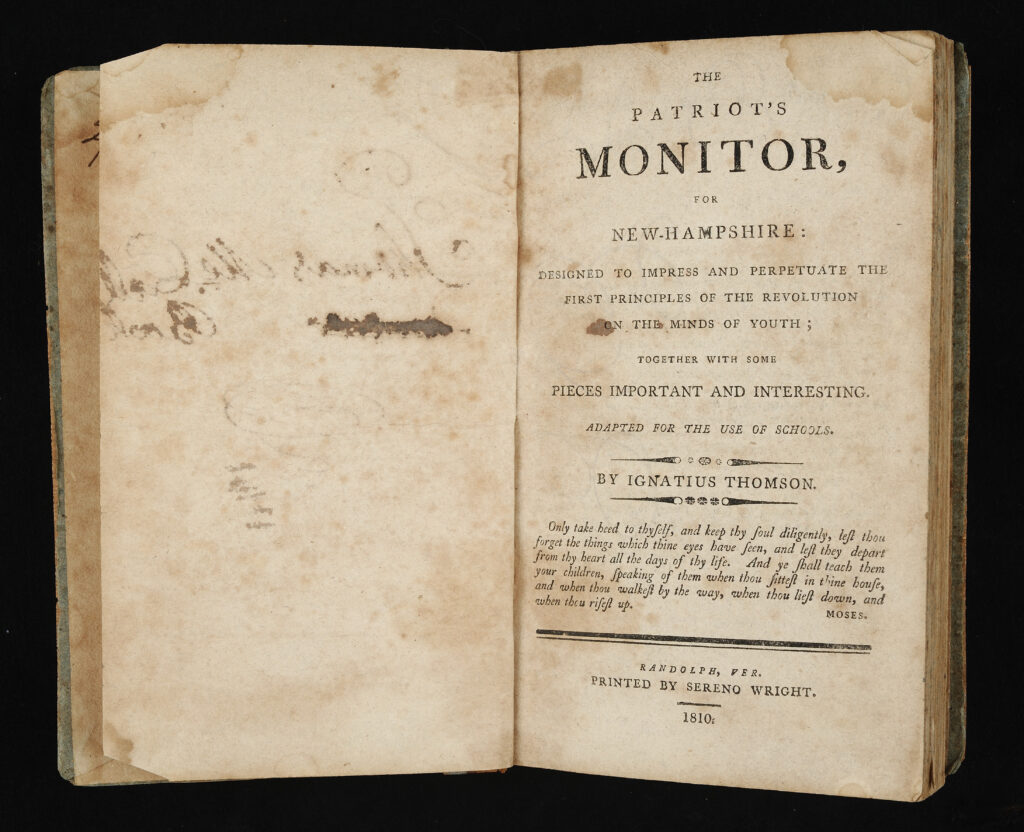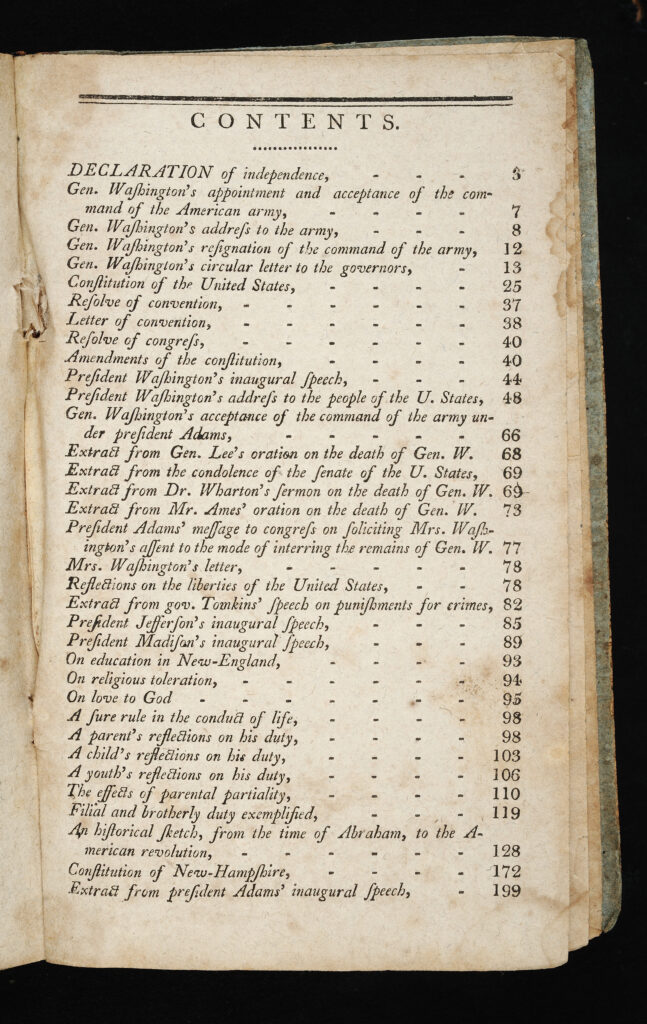33rd Annual National Council for History Education Conference
Salt Lake City, Utah
March 25, 2023
Participants examined an 1810 publication called The Patriot’s Monitor … Designed to Impress and Perpetuate the First Principles of the Revolution on the Minds of Youth; Adapted for the Use of Schools to consider what fundamental concepts of freedom and founding documents the author deemed essential to the education of the youngest citizens of the early American republic. Contemporary as well as modern works were explored before attendees were asked to compose a version of the Monitor for their twenty-first century classrooms.

Click for a larger view.
The Patriot's Monitor, for New-Hampshire: Designed to Impress and Perpetuate the First Principles of the Revolution on the Minds of Youth; together with Some Pieces Important and Interesting. Adapted for the Use of Schools
Ignatius Thomson
Randolph, Vermont: Sereno Wright, 1810The Society of the Cincinnati
This 1810 textbook “designed to impress and perpetuate the first principles of the Revolution on the minds of youth,” was compiled by the Rev. Ignatius Thomson of Pomfret, Vermont. He selected key documents of America’s founding, from the Declaration of Independence through the inaugural addresses of the first four presidents of the United States, along with other moral and patriotic lessons. Each paragraph of each text is numbered to facilitate recitation and reading aloud in a class.
Click for a larger view.
The Patriot's Monitor, for New-Hampshire: Designed to Impress and Perpetuate the First Principles of the Revolution on the Minds of Youth; together with Some Pieces Important and Interesting. Adapted for the Use of Schools
Ignatius Thomson
Randolph, Vermont: Sereno Wright, 1810The Society of the Cincinnati
George Washington’s central role in the achievement of American Independence is documented in the first five texts of the Patriot’s Monitor: “The Declaration of Independence” (p. 3-7); "General Washington's appointment and acceptance of the command of the American army" (p. 7-8); "General Washington's address to the army" (p. 8-12); "General Washington's resignation of the command of the army" (p. 12-13); and "General Washington's circular letter to the governors of the several states" (p. 13-24).download pdf version of presentation